-
 Bitcoin
Bitcoin $84,491.4272
0.35% -
 Ethereum
Ethereum $1,629.9188
2.22% -
 Tether USDt
Tether USDt $0.9996
0.00% -
 XRP
XRP $2.1255
-1.74% -
 BNB
BNB $584.1717
-0.14% -
 Solana
Solana $129.3048
-0.25% -
 USDC
USDC $0.9997
-0.02% -
 TRON
TRON $0.2531
0.03% -
 Dogecoin
Dogecoin $0.1604
-1.68% -
 Cardano
Cardano $0.6338
-2.36% -
 UNUS SED LEO
UNUS SED LEO $9.3913
0.02% -
 Chainlink
Chainlink $12.7602
-0.11% -
 Avalanche
Avalanche $19.9912
0.34% -
 Stellar
Stellar $0.2392
-2.25% -
 Sui
Sui $2.2195
-2.36% -
 Shiba Inu
Shiba Inu $0.0...01208
-0.23% -
 Hedera
Hedera $0.1655
-1.48% -
 Toncoin
Toncoin $2.8091
-2.20% -
 Bitcoin Cash
Bitcoin Cash $326.8962
-4.93% -
 Polkadot
Polkadot $3.7124
0.19% -
 Litecoin
Litecoin $76.2033
-3.08% -
 Dai
Dai $0.9997
-0.03% -
 Hyperliquid
Hyperliquid $15.5385
-0.46% -
 Bitget Token
Bitget Token $4.3039
0.39% -
 Pi
Pi $0.7320
-2.31% -
 Ethena USDe
Ethena USDe $0.9988
0.00% -
 Monero
Monero $212.5291
2.84% -
 Uniswap
Uniswap $5.3787
-0.07% -
 OKB
OKB $53.1970
-1.18% -
 Pepe
Pepe $0.0...07372
2.06%
What is the use of Merkle Tree in NFT?
Merkle Trees enhance NFT security, efficiency, and scalability by enabling quick verification and protecting against data tampering.
Apr 12, 2025 at 05:07 pm
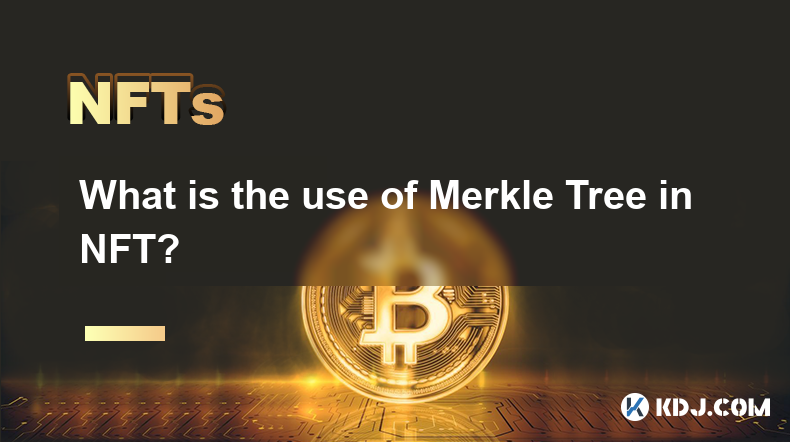
Merkle Trees play a crucial role in the world of Non-Fungible Tokens (NFTs), enhancing their efficiency, security, and scalability. In this article, we will delve into the specifics of how Merkle Trees are used in NFTs, exploring their structure, benefits, and practical applications.
Understanding Merkle Trees
A Merkle Tree, also known as a hash tree, is a data structure used in cryptography and computer science. It is constructed by recursively hashing pairs of nodes until a single hash, known as the Merkle Root, is obtained. This structure allows for efficient and secure verification of the contents of large data sets.
In the context of NFTs, Merkle Trees are used to manage and verify the ownership and authenticity of digital assets. Each leaf node in the Merkle Tree represents a piece of data, such as a transaction or an NFT, and the tree's structure ensures that any alteration to the data can be quickly detected.
How Merkle Trees Enhance NFT Security
Security is a paramount concern in the NFT ecosystem, and Merkle Trees provide a robust solution. By using cryptographic hashes, Merkle Trees ensure that any change to a single piece of data will result in a different Merkle Root. This makes it extremely difficult for malicious actors to tamper with the data without being detected.
For example, if an NFT's metadata is altered, the corresponding leaf node's hash will change, which in turn will change the hash of its parent node, and so on, up to the Merkle Root. This chain reaction ensures that any unauthorized modification can be easily identified, thereby protecting the integrity of the NFT.
Efficiency and Scalability in NFT Transactions
Efficiency and scalability are critical for the widespread adoption of NFTs. Merkle Trees contribute significantly to these aspects by allowing for quick and efficient verification of large data sets. Instead of having to check every piece of data individually, a Merkle Tree enables the verification of the entire data set by checking the Merkle Root.
In the context of NFTs, this means that the ownership and authenticity of thousands of NFTs can be verified quickly and efficiently. This is particularly important for platforms that handle a high volume of NFT transactions, as it reduces the computational load and speeds up the transaction process.
Practical Applications of Merkle Trees in NFTs
Merkle Trees have several practical applications in the NFT space. One of the most common uses is in the creation of Merkle Airdrops. In a Merkle Airdrop, a list of eligible recipients is hashed into a Merkle Tree, and each recipient can prove their eligibility by providing a Merkle Proof, which is a series of hashes that link their address to the Merkle Root.
Here is a step-by-step guide on how to create a Merkle Airdrop for NFTs:
- Prepare the List of Recipients: Compile a list of wallet addresses that are eligible to receive the NFT.
- Generate the Merkle Tree: Use a Merkle Tree generator tool to hash the list of addresses into a Merkle Tree. This will produce a Merkle Root and individual Merkle Proofs for each address.
- Distribute the NFTs: When a recipient claims their NFT, they provide their Merkle Proof, which is verified against the Merkle Root to confirm their eligibility.
- Verify the Transaction: Once the Merkle Proof is verified, the NFT is transferred to the recipient's wallet.
Another application is in NFT Whitelisting, where a Merkle Tree is used to manage a whitelist of addresses that are allowed to mint or purchase specific NFTs. This helps prevent bots and unauthorized users from participating in the minting process.
Merkle Trees and Gas Optimization
Gas optimization is another area where Merkle Trees provide significant benefits in the NFT ecosystem. By using Merkle Trees, the amount of data that needs to be stored on the blockchain can be reduced, which in turn reduces the gas costs associated with transactions.
For instance, instead of storing the entire list of eligible recipients for an airdrop on the blockchain, only the Merkle Root needs to be stored. This not only saves space but also reduces the gas costs, making NFT transactions more cost-effective for users.
Merkle Trees in NFT Marketplaces
NFT Marketplaces also leverage Merkle Trees to enhance their operations. By using Merkle Trees, marketplaces can efficiently manage and verify the authenticity of the NFTs listed on their platforms. This is particularly important for ensuring that only legitimate NFTs are traded, thereby maintaining the trust and integrity of the marketplace.
For example, when a user lists an NFT for sale, the marketplace can use a Merkle Tree to verify the NFT's authenticity by checking its hash against the Merkle Root. This ensures that the NFT has not been tampered with and is indeed the original asset.
Frequently Asked Questions
Q: Can Merkle Trees be used to prevent double-spending in NFTs?
A: While Merkle Trees themselves do not prevent double-spending, they can be used in conjunction with other blockchain mechanisms to enhance the security of NFT transactions. By verifying the authenticity and ownership of NFTs through Merkle Trees, the risk of double-spending can be minimized.
Q: How do Merkle Trees affect the privacy of NFT owners?
A: Merkle Trees do not directly impact the privacy of NFT owners. However, the use of Merkle Proofs in airdrops and whitelisting can reveal certain information about the recipients. To mitigate this, some platforms use zero-knowledge proofs in conjunction with Merkle Trees to enhance privacy.
Q: Are there any limitations to using Merkle Trees in NFTs?
A: While Merkle Trees offer numerous benefits, they are not without limitations. One potential limitation is the complexity of implementing and understanding Merkle Trees, which can be a barrier for some developers and users. Additionally, the effectiveness of Merkle Trees depends on the security of the underlying hash functions used.
Q: Can Merkle Trees be used for other types of digital assets besides NFTs?
A: Yes, Merkle Trees can be used for various types of digital assets beyond NFTs. They are commonly used in blockchain technologies for verifying the integrity of transactions and data sets. For example, Bitcoin uses Merkle Trees to efficiently verify the inclusion of transactions in a block.
Disclaimer:info@kdj.com
The information provided is not trading advice. kdj.com does not assume any responsibility for any investments made based on the information provided in this article. Cryptocurrencies are highly volatile and it is highly recommended that you invest with caution after thorough research!
If you believe that the content used on this website infringes your copyright, please contact us immediately (info@kdj.com) and we will delete it promptly.
- US President Donald Trump Issues Sharp Rebuttal to Information About "exceptions" to the Tariff Standoff with China
- 2025-04-15 00:50:13
- Mantra (OM) token recovery is the company's 'preeminent and primary concern', says CEO John Mullin
- 2025-04-15 00:50:13
- Shocked as Bitcoin Experienced a Record Decline After Trump's Tariffs Were Announced
- 2025-04-15 00:45:13
- Binance and Laser Digital Distance Themselves From Responsibility as Mantra (OM) Token Crashes 90%
- 2025-04-15 00:45:13
- Dawgz AI ($DAGZ): The Meme Coin with Real Utility Is Back and Ready to Boom
- 2025-04-15 00:40:13
- The International Monetary Fund is warning countries about an impending global recession
- 2025-04-15 00:40:13
Related knowledge
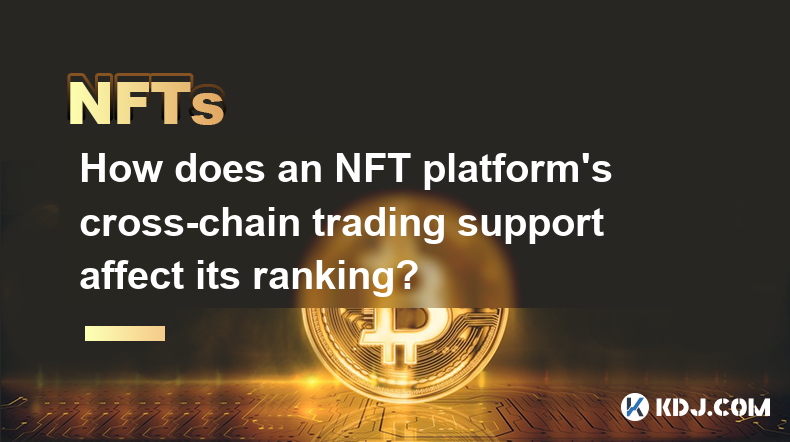
How does an NFT platform’s cross-chain trading support affect its ranking?
Apr 14,2025 at 04:49pm
The impact of an NFT platform's cross-chain trading support on its ranking is a multifaceted topic that delves into the technical capabilities, user experience, and market dynamics of the platform. Cross-chain trading refers to the ability of an NFT platform to facilitate the exchange of non-fungible tokens across different blockchain networks. This fea...
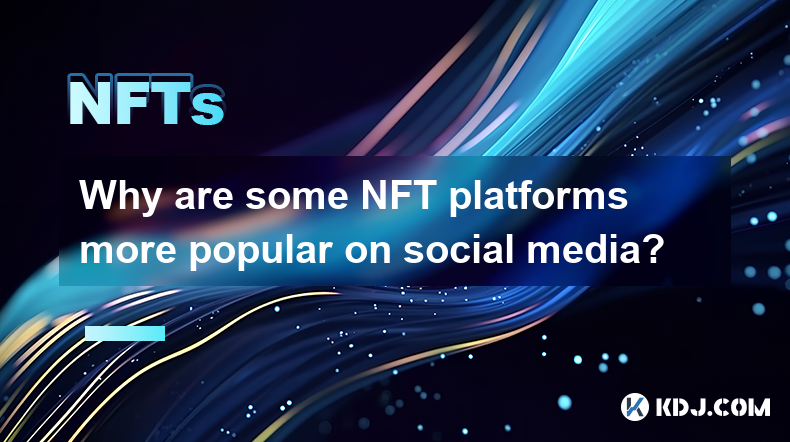
Why are some NFT platforms more popular on social media?
Apr 15,2025 at 01:00am
The popularity of NFT platforms on social media can be attributed to a variety of factors that influence their visibility, engagement, and overall appeal to users. Understanding these factors can provide insights into why certain platforms capture more attention and interaction on social media channels. User Experience and InterfaceUser experience (UX) ...

Which NFT platforms perform best in virtual land transactions?
Apr 14,2025 at 02:56pm
The NFT market has seen significant growth in virtual land transactions, with several platforms emerging as leaders in this space. Decentraland, The Sandbox, and Somnium Space are among the top performers, each offering unique features and opportunities for users. In this article, we will delve into these platforms, examining their strengths, transactio...
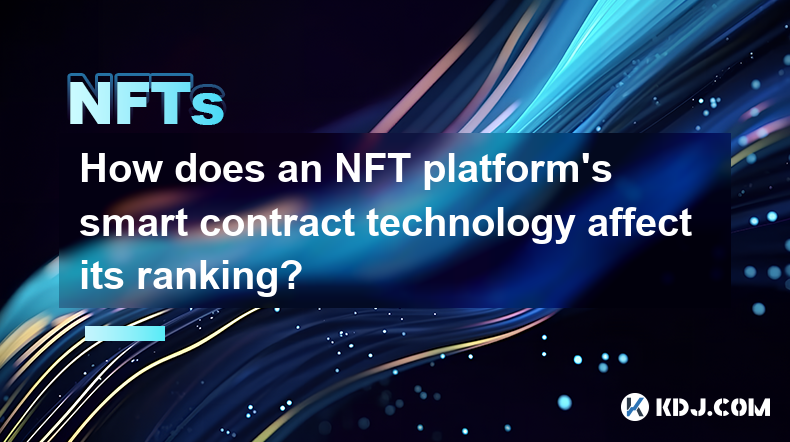
How does an NFT platform’s smart contract technology affect its ranking?
Apr 14,2025 at 11:42pm
Introduction to NFT Platforms and Smart ContractsThe world of Non-Fungible Tokens (NFTs) has seen explosive growth, with platforms like OpenSea, Rarible, and SuperRare becoming household names in the crypto space. At the heart of these platforms lies smart contract technology, which plays a crucial role in their operation and, consequently, their rankin...
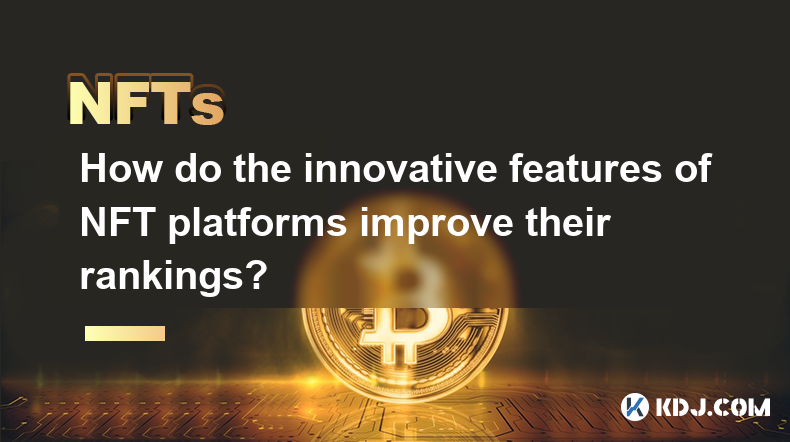
How do the innovative features of NFT platforms improve their rankings?
Apr 15,2025 at 12:42am
The world of Non-Fungible Tokens (NFTs) has seen rapid growth and evolution, leading to the emergence of numerous NFT platforms. These platforms vary widely in terms of features and functionality, which directly impacts their rankings and popularity within the cryptocurrency community. Innovative features play a crucial role in distinguishing top-perfor...
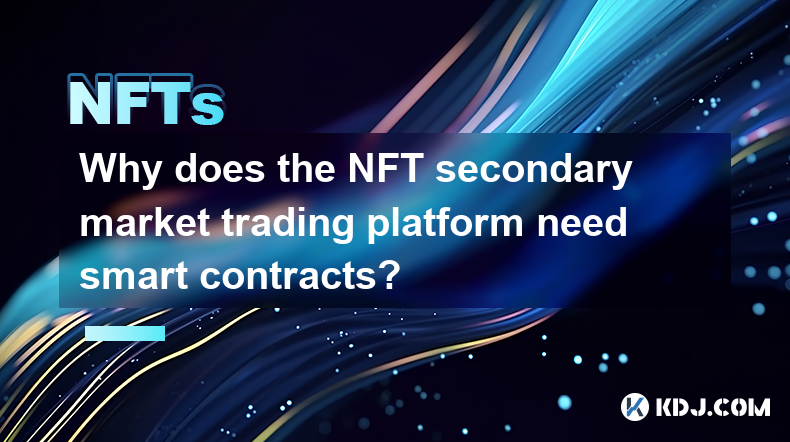
Why does the NFT secondary market trading platform need smart contracts?
Apr 14,2025 at 05:07pm
Why does the NFT secondary market trading platform need smart contracts? Non-Fungible Tokens (NFTs) have revolutionized the way digital assets are created, owned, and traded. At the heart of NFT trading platforms, especially in the secondary market, lies the crucial technology of smart contracts. This article explores the necessity and functionality of ...

How does an NFT platform’s cross-chain trading support affect its ranking?
Apr 14,2025 at 04:49pm
The impact of an NFT platform's cross-chain trading support on its ranking is a multifaceted topic that delves into the technical capabilities, user experience, and market dynamics of the platform. Cross-chain trading refers to the ability of an NFT platform to facilitate the exchange of non-fungible tokens across different blockchain networks. This fea...

Why are some NFT platforms more popular on social media?
Apr 15,2025 at 01:00am
The popularity of NFT platforms on social media can be attributed to a variety of factors that influence their visibility, engagement, and overall appeal to users. Understanding these factors can provide insights into why certain platforms capture more attention and interaction on social media channels. User Experience and InterfaceUser experience (UX) ...

Which NFT platforms perform best in virtual land transactions?
Apr 14,2025 at 02:56pm
The NFT market has seen significant growth in virtual land transactions, with several platforms emerging as leaders in this space. Decentraland, The Sandbox, and Somnium Space are among the top performers, each offering unique features and opportunities for users. In this article, we will delve into these platforms, examining their strengths, transactio...

How does an NFT platform’s smart contract technology affect its ranking?
Apr 14,2025 at 11:42pm
Introduction to NFT Platforms and Smart ContractsThe world of Non-Fungible Tokens (NFTs) has seen explosive growth, with platforms like OpenSea, Rarible, and SuperRare becoming household names in the crypto space. At the heart of these platforms lies smart contract technology, which plays a crucial role in their operation and, consequently, their rankin...

How do the innovative features of NFT platforms improve their rankings?
Apr 15,2025 at 12:42am
The world of Non-Fungible Tokens (NFTs) has seen rapid growth and evolution, leading to the emergence of numerous NFT platforms. These platforms vary widely in terms of features and functionality, which directly impacts their rankings and popularity within the cryptocurrency community. Innovative features play a crucial role in distinguishing top-perfor...

Why does the NFT secondary market trading platform need smart contracts?
Apr 14,2025 at 05:07pm
Why does the NFT secondary market trading platform need smart contracts? Non-Fungible Tokens (NFTs) have revolutionized the way digital assets are created, owned, and traded. At the heart of NFT trading platforms, especially in the secondary market, lies the crucial technology of smart contracts. This article explores the necessity and functionality of ...
See all articles























































































